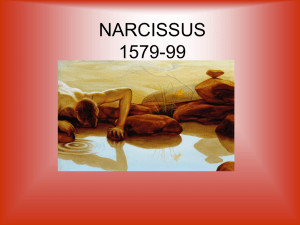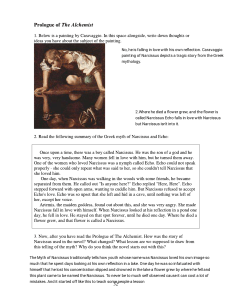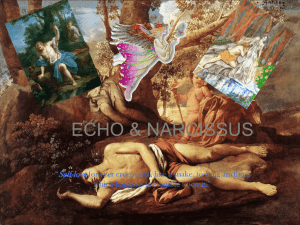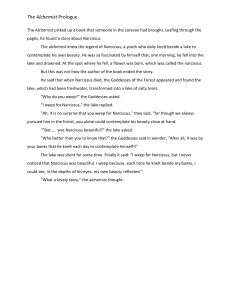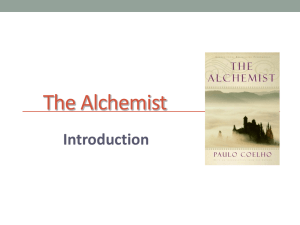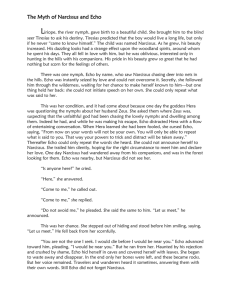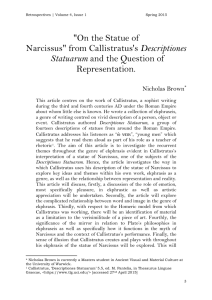Metamorphosis of Narcissus 1937 - Salvador Dalí
advertisement
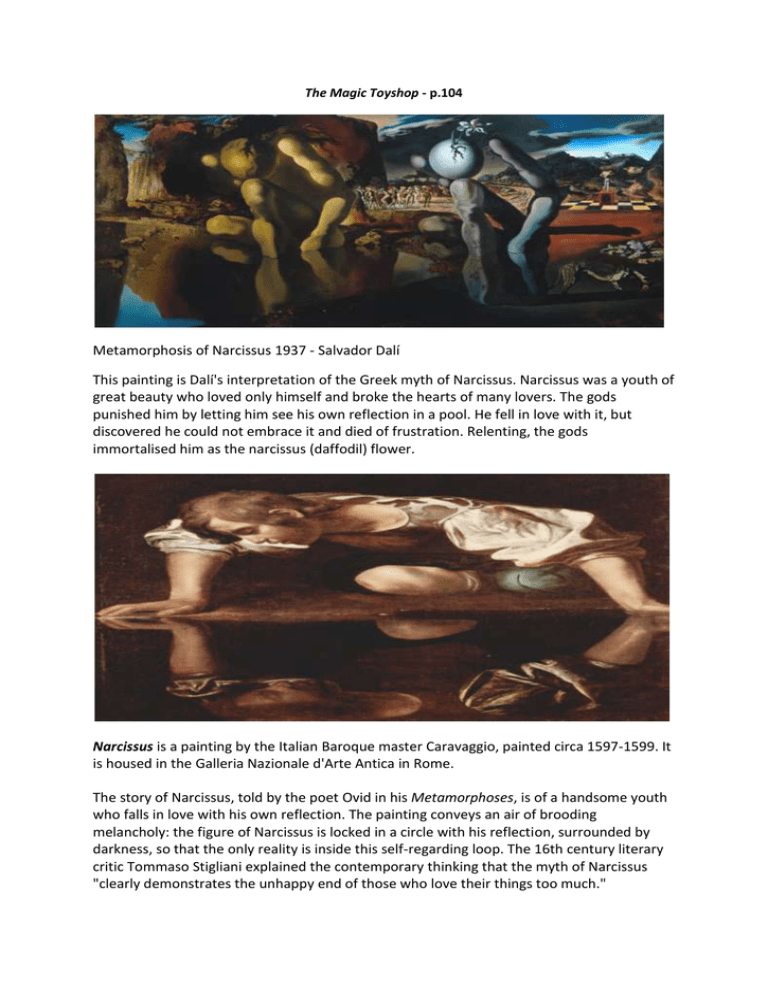
The Magic Toyshop - p.104 Metamorphosis of Narcissus 1937 - Salvador Dalí This painting is Dalí's interpretation of the Greek myth of Narcissus. Narcissus was a youth of great beauty who loved only himself and broke the hearts of many lovers. The gods punished him by letting him see his own reflection in a pool. He fell in love with it, but discovered he could not embrace it and died of frustration. Relenting, the gods immortalised him as the narcissus (daffodil) flower. Narcissus is a painting by the Italian Baroque master Caravaggio, painted circa 1597-1599. It is housed in the Galleria Nazionale d'Arte Antica in Rome. The story of Narcissus, told by the poet Ovid in his Metamorphoses, is of a handsome youth who falls in love with his own reflection. The painting conveys an air of brooding melancholy: the figure of Narcissus is locked in a circle with his reflection, surrounded by darkness, so that the only reality is inside this self-regarding loop. The 16th century literary critic Tommaso Stigliani explained the contemporary thinking that the myth of Narcissus "clearly demonstrates the unhappy end of those who love their things too much." The Magic Toyshop - p.83,118 "Bluebeard" (French: La Barbe bleue) is a French literary folktale written by Charles Perrault and published in Histoires ou contes du temps passé in 1697. The tale tells the story of a violent nobleman in the habit of murdering his wives and the attempts of one wife to avoid the fate of her predecessors. Gilles de Rais, a 15th-century aristocrat and prolific serial killer, as well as Conomor the Accursed, an early Breton king, have been suggested as sources for the character of Bluebeard. "The White Dove", "Mister Fox" and "Fitcher's Bird" are tales similar to "Bluebeard". "Heer Halewijn", a medieval Dutch folk ballad, and a story found in Night 16 of The Arabian Nights, also share notable plot details with the Bluebeard tale. The Magic Toyshop - p.141-153,165-8,171-4 Leda and the Swan is a story and subject in art from Greek mythology in which the god Zeus seduced, or raped, Leda in the form of a swan. According to later Greek mythology, Leda bore Helen and Polydeuces, children of Zeus, while at the same time bearing Castor and Clytemnestra, children of her husband Tyndareus, the King of Sparta. According to many versions of the story, Zeus took the form of a swan and raped or seduced Leda on the same night she slept with her husband King Tyndareus. In some versions, she laid two eggs from which the children hatched. In other versions, Helen is a daughter of Nemesis, the goddess who personified the disaster that awaited those suffering from the pride of Hubris. The Magic Toyshop - p.154 Hieronymus Bosch (1450-1516) was a Dutch painter. His work is known for its use of fantastic imagery to illustrate moral and religious concepts and narratives.
